
Stream and forest in the Tongass National Forest, the world largest temperate rainforest located in Southeast Alaska. Photo by: Matthew Dolkas.
Although unlikely to pass anytime in the near term, recurring legislation that would hand over 80,000 acres of the Tongass Rainforest to a Native-owned logging corporation has put local communities on guard in Southeast Alaska.
“The legislation privatizes a public resource. It takes land that belongs to all of us, and that all of us have a say in the use and management of, and it gives that land to a private for-profit corporation,” Andrew Thoms, Executive Director of the Sitka Conservation Society, told mongabay.com in a recent interview. “Most of the land has been selected for its timber, and we can expect some of the largest and oldest trees on the forests to be clear-cut. Other parcels were selected for non-timber commercial value or for cultural and historic value, and these parcels have created a lot of heartburn in communities in Southeast Alaska because the parcels include places people depend upon for hunting and subsistence or recreation or are major access points, and again they will be going to a private corporation.”
The legislation, known formally as S 730 and HR 1408, has been written to allow Sealaksa to select logging areas outside of long-designated areas, allowing the company to pick-and-choose some of the last stands of old-growth forest. In addition the legislation has allows the corporation to choose new “sacred” sites—i.e. sites sacred to indigenous tribe—as well as “enterprise” sites, which would allow development in certain areas of the forest for Sealaska.
 Deer fawn in the Tongass National Forest. Photo courtesy of the Sitka Conservation Society. |
“[The enterprise sites] are something new, and are intended for economic development,” says Thoms. “They are a land grab for a private corporation, which is going to take these wild places and develop them for their own profits.”
The legislation is meant to meet some of the last promises made in the Alaska Native Claims Settlement Act (ANCSA). Signed in the 1970s, the ANCSA gave Native Tribes under various corporations 148 million acres of federal land. Sealaska, one of the corporations in question, has since conducted logging operations on nearly 290,000 acres. The corporation has long been criticized for its logging practices, including large-scale clear cutting. But local communities in the Tongass depend heavily on the forest for salmon fishing—10 percent of people in the region work in fisheries—as well as recreation and tourism. Not surprisingly, the proposed legislation has raised hackles and is seen by critics as a quid-pro-quo to Sealaska for political contributions.
“The Tongass is a place where people are still intricately connected to the natural world in their day-to-day lives,” explains Thoms. “[The town of] Sitka wouldn’t be a town on the map if not for the Tongass, and I can’t imagine many people who live here would want to be here if not for the forest. It’s why people live in this part of the world.”
According to Thoms, it’s time to move beyond old-growth logging altogether in the Tongass, and instead move the focus toward fishing and tourism.
“We do not think old-growth logging should have a future on the Tongass,” he says. “Our organization supports sustainable second growth harvests, and we advocate for forest management that considers all uses of the forest. Right now the timber industry represents only about 2 percent of all jobs in Southeast Alaska, which puts it way behind fishing and tourism, which are two industries that require a healthy forest.”
INTERVIEW WITH ANDREW THOMS

Logging at a river restoration site. Photo courtesy of the Sitka Conservation Society.
Mongabay: What is unique about the Tongass National Forest?
Andrew Thoms: The Tongass is a very rare temperate rainforest ecosystem; it’s actually the largest intact temperate rainforest in the world. It rains a lot here, but that produces giant trees and healthy salmon streams, and great habitat for brown bears and other animals you don’t see much of in other places.
The Tongass is spread over thousands of islands in the Alaskan panhandle, and that means the communities are very isolated and people have to fly or take ferries to get from town to town. I think the distances and isolation make people more reliant on the environment. The Tongass is a place where people are still intricately connected to the natural world in their day-to-day lives.
Mongabay: How do locals view and use the forest?
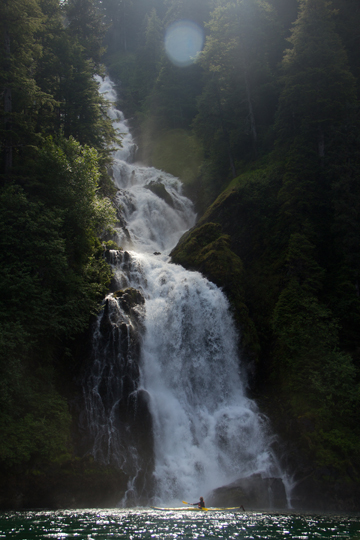 Kayaker under waterfall in the Tongass National Forest. Photo courtesy of the Sitka Conservation Society. |
Andrew Thoms: Here in Sitka, as in communities throughout the Tongass, our entire way of life is tied to the forest. It’s where we get a lot of our food, it’s where we go for recreation, and it’s absolutely the backbone of our economy.
We say the Tongass is a salmon forest, because of the nutrient cycle between the trees and the salmon. The Tongass produces the salmon, while the salmon produce the forest, but the salmon also produce a lot of jobs. Ten percent of jobs in the region are directly tied to commercial salmon fishing, so the Tongass has a huge economic impact in that regard, and that’s not even considering that our tourism economy is also entirely reliant on the Tongass.
Sitka wouldn’t be a town on the map if not for the Tongass, and I can’t imagine many people who live here would want to be here if not for the forest. It’s why people live in this part of the world.
Mongabay: How does current the legislation in the U.S. Congress imperil the Tongass?
Andrew Thoms: The legislation privatizes a public resource. It takes land that belongs to all of us, and that all of us have a say in the use and management of, and it gives that land to a private for-profit corporation.
Not only would the public lose access to the land, and we’re talking about 80,000 acres, but the land is not going to be used in a way that is consistent with what the public wants. Most of the land has been selected for its timber, and we can expect some of the largest and oldest trees on the forests to be clear-cut. Other parcels were selected for non-timber commercial value or for cultural and historic value, and these parcels have created a lot of heartburn in communities in Southeast Alaska because the parcels include places people depend upon for hunting and subsistence or recreation or are major access points, and again they will be going to a private corporation.
Mongabay: Will you tell us what “sacred” and “enterprise” sites are in the Tongass? How have locals reacted to the inclusion of some of these sites in the legislation?
Andrew Thoms: These are the non-timber sites in the legislation, and account for maybe about 10,000 acres scattered throughout the Tongass. That’s the problem with these sites. Each individual site is small compared to the timber parcels, but they tend to be in critical places on the Tongass. The Tongass is vast, but the resources the public depends on the most are concentrated in places like the mouths of salmon streams or prime deer habitat, and the sacred and enterprise sites have allowed Sealaska to select dozens if not hundreds of locations throughout the Tongass that are well-known and well-loved by the people who live here.
When the first list of sacred and enterprise sites was released in an earlier version of the legislation, I would say that most people were very upset, because I think everyone in Southeast Alaska could look at the list and see a place that they knew and that was really important to them and think that they wouldn’t be able to go there anymore, or worse, to think that wild and beautiful place was going to be developed.
These sites have gone through changes as we’ve seen different versions of the legislation introduced, and right now we aren’t even sure where a lot of the places are anymore.
The bottom line is we support Native people having ownership of places that are sacred and of cultural importance to them, but Sealaska already claimed about 100 such sites in the 1970s, and we want to be sure there aren’t abuses in the legislation, and the established regulations are followed for determining what is sacred.
As far as enterprise sites, these are something new, and are intended for economic development. We feel they came out of nowhere and they really just boil down to privatizing a public resource. They are a land grab for a private corporation, which is going to take these wild places and develop them for their own profits.
Mongabay: Why was Sealaska allowed to pick the stands of forest outside the usually designated boxes?

Aerial view of clearcut logging on mountain side. Photo courtesy of the Sitka Conservation Society.
Andrew Thoms: That’s a good question.
Following the passage of the Alaska Native Claims Settlement Act, Sealaska agreed it would make its land selections in designated areas we now call “the boxes.” It began selecting land in the 1970s, and did massive liquidation logging on much of its land. They literally liquidated the resources off these lands through massive timber clear-cuts. At some point it had cut all the timber available in the designated selection areas, and it decided maybe it could change the rules through legislation and seek better timber outside of the boxes.
Why it has succeeded in getting legislation introduced is the result of money and politics. Sealaska has become a wealthy and influential corporation. It was part of an effort that contributed over $1.5 million to Senator Lisa Murkowski’s election campaign. And, guess who introduced the legislation? The Alaska congressional delegation knows Sealaska can deliver votes, so I think that’s the reason we see this coming back every session if Congress.
Mongabay: Will you tell us what “high-grading” is and how this practice is connected to the current legislation?
Andrew Thoms: High-grading is the process of identifying the prime timber, which is usually the largest and oldest, when selecting trees to harvest. It was essentially standard practice, but decades of advocacy by conservationists helped shift management by the Forest Service away from always selecting the largest old growth.
This legislation has been referred to as high-grading, because Sealaska is using it to target the largest old growth. The land Sealaska has identified contains about 15 percent of the largest and oldest trees on the Tongass, which are known as Class 7 trees. If Sealaska were to stay in its selection areas it would have access to less than 1.5 percent of the Class 7 trees on the Tongass.
Mongabay: What about the argument that this legislation is fulfilling a decades-old commitment to Native tribes (in the form of the Sealaska Corporation) under the 1971 Alaska Native Claims Settlement Act?
Andrew Thoms: First of all it should be clarified that Sealaska is not a tribe. It’s a corporation with shareholders who come from multiple Native groups in Southeast Alaska. There are tribes throughout Southeast Alaska, and although their individual members may be shareholders in Sealaska, there are often complicated relationships between the tribes and Sealaska. A lot of tribes have expressed concern over the years about Sealaska, a corporation, being given ownership of places of cultural importance to individual tribes.
Now, ANCSA did commit land to Sealaska and Native groups throughout Alaska, and we fully support fulfilling the commitments of ANCSA throughout Alaska. I think there is overwhelming support across the political spectrum in Alaska that the commitments of ANCSA need to be fulfilled.
The problem with the legislation is it modifies ANCSA. Sealaska was awarded land with certain qualifications back in the 1970s, and there was a whole lot of discussion and deliberation at that time on where the land would be selected. When that was finalized, everyone moved forward, including the Forest Service, which has done extensive land management planning under the assumption that certain lands would be remaining public lands.
The legislation is not fulfilling the commitment of ANCSA. It is allowing one corporation to revise ANCSA to its benefit. We oppose that, because we believe the proposed revision will have far more negative impacts on the Tongass than if Sealaska complied with the agreement from the 1970s. Furthermore, we oppose it because we don’t know what sort of precedent it may be setting. This could open the door for other corporations to try the same thing.
Mongabay: Do you think Native tribes in the area will benefit if this legislation is enacted?

Brown bear in the Tongass. Photo courtesy of the Sitka Conservation Society.
Andrew Thoms: We can say with certainty that Sealaska executives will benefit financially from this. Sealaska is a corporation with about 20,000 Native shareholders, who receive a few hundred dollars in corporate dividends each year. We have a statistic from 2008, where Sealaska paid out about $8 million in dividends to shareholders in Southeast Alaska, and paid $4.6 million in salary to the 50 people working at its office in Juneau. The top five Sealaska executives have a combine salary of almost $2 million a year, so that goes back to the fact that this is about a corporation making money for itself. There is a great divide between the average shareholder and the corporate higher ups. The higher-ups have been the advocates for the legislation year-in-and-year-out, because they have a lot of money on the line.
We don’t think the legislation would have a long-term positive impact on Native people in the region in general. It may produce short-term jobs in the timber industry for a very limited number of people, but it’s not going to rescue the economy in the struggling communities.
Mongabay: Do you think old-growth logging should have a future on the Tongass or is it to time to move beyond this practice?
Andrew Thoms: In 2010, the Forest Service here committed to a transition framework to shift its focus from old growth logging to more sustainable practices, so we like to think Southeast Alaska has moved on from the days of old-growth logging. Unfortunately, the Forest Service is still proposing timber sales that it says will bridge the gap while their transaction unfolds, and then we have this legislation, which we see is a big step backward in terms of how it will impact old growth.
To answer your question, we do not think old-growth logging should have a future on the Tongass. Our organization supports sustainable second growth harvests, and we advocate for forest management that considers all uses of the forest. Right now the timber industry represents only about 2 percent of all jobs in Southeast Alaska, which puts it way behind fishing and tourism, which are two industries that require a healthy forest. To have a strong economy here, it has to be a diverse economy, and there is a place for timber, but not the type of large scale harvests of old growth that would happen if the legislation were to pass.
Mongabay: If Sealaska isn’t awarded the land it wants in the Tongass, where is it likely to seek forest next?
Andrew Thoms: We’re not sure Sealaska ever plans to give up on this legislation. The legislation was first introduced in 2007, and they’re still working on it in 2012, and all indications are it will be reintroduced in 2013. They have the resources to keep working on this, and I can’t see them backing down when they already have invested so much time and money. The issue is it has never gone to a Senate vote.
If the legislation ultimately fails in Congress, Sealaska will go back and finish its selections in the designated boxes. The purpose of the legislation is for Sealaska to complete its selections outside the boxes. In 2008, it actually identified lands inside the boxes it would like to claim should its legislation fail. For now, those selections are put on hold.
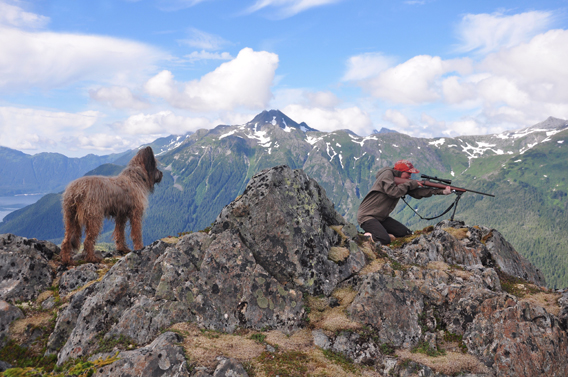
Hunting is hugely important in the Tongass National Forest both for locals and tourists. Photo courtesy of the Sitka Conservation Society.

Fishing is one of the most important industries in the region, but can be imperiled by unsustainable logging. Photo by: Matthew Dolkas.

Hiking in the Tongass. Photo courtesy of the Sitka Conservation Society.

Untouched forest in the Tongass. Photo courtesy of the Sitka Conservation Society.

Kayaking in the Tongass. Photo courtesy of the Sitka Conservation Society.

Family of merganser ducks in the Tongass. Photo courtesy of the Sitka Conservation Society.

Fly fishing in the Tongass. Photo courtesy of the Sitka Conservation Society.
Related articles
Featured video: restoring rivers in the Tongass Rainforest
(08/08/2012) A new video highlights recent efforts to restore rivers in the Tongass Forest, the world’s largest intact temperate rainforest. Industrial logging in vital watersheds have hurt salmon populations and other wildlife in the region, an issue the government, along with several partners, are now trying to rectify.
Alaskan fishermen tell government to focus on salmon, not logging
(03/12/2012) Alaskan fishermen and tour operators visited Washington D.C. last week to urge the federal government to shift the focus from logging to conservation in the Tongass rainforest. Local Alaskans along with NGOs Trout Unlimited, Alaska Program, and Sitka Conservation Society, made the case that conservation, including the restoration of fish habitat, was a far better strategy for the local economy and jobs than logging. The Tongass rainforest is currently the subject of a controversial logging proposal by the government for the indigenous-owned company, Sealaska.
U.S. legislation threatens oldest, tallest trees in Tongass rainforest
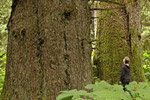
(02/27/2012) Up to 17 percent of the tallest old-growth trees in the Tongass temperate rainforest could be cut under new U.S. legislation, according to a report by Audubon Alaska. The report argues that the legislation under consideration (S 730 and HR 1408) would resurrect the banned practice of “high-grading,” which allows loggers to select the largest, most-ancient trees across the forest for cutting despite their ecological importance. The legislation is a part of a controversial 65,000 acre logging concession in Tongass to Sealaska Corporation, which is owned by 20,000 members of Native communities, from the Tlingit, Haida and Tsimshian tribes.
Goodbye national parks: when ‘eternal’ protected areas come under attack
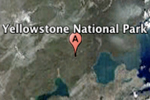
(03/17/2011) One of the major tenets behind the creation of a national park, or other protected area, is that it will not fade, but remain in essence beyond the pressures of human society, enjoyed by current generations while being preserved for future ones. The protected area is a gift, in a way, handed from one wise generation to the next. However, in the real world, dominated by short-term thinking, government protected areas are not ‘inalienable’, as Abraham Lincoln dubbed one of the first; but face being shrunk, losing legal protection, or in some cases abolished altogether. A first of its kind study, published in Conservation Letters, recorded 89 instances in 27 countries of protected areas being downsized (shrunk), downgraded (decrease in legal protections), and degazetted (abolished) since 1900. Referred to by the authors as PADDD (protected areas downgraded, downsized, or degazetted), the trend has been little studied despite its large impact on conservation efforts.
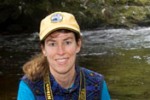
(07/11/2010) Most of the US’s large ecosystems are but shadows of their former selves. The old-growth deciduous forests that once covered nearly all of the east and mid-west continental US are gone, reduced to a few fragmented patches that are still being lost. The tall grassy plains that once stretched further than any eye could see have been almost wholly replaced by agriculture and increasing suburbs. Habitats, from deserts to western forests, are largely carved by roads and under heavy impact from resource exploitation to invasive species. Coastal marine systems, once super abundant, have partially collapsed in many places due to overfishing, as well as pollution and development. Despite this, there are still places in the US where the ‘wild’ in wilderness remains largely true, and one of those is the Tongass temperate rainforest of Southeast Alaska.
Local voices: frustration growing over Senate plan on Tongass logging
(06/17/2010) Recently local Alaskan communities were leaked a new draft of a plan to log 80,000 acres of the Tongass forest making its way through the US Senate Energy and Natural Resources committee. According to locals who wrote to mongabay.com, the draft reinforced their belief that the selection of which forests to get the axe has nothing to do with community or environmental concerns.
Photos: Tongass logging proposal ‘fatally flawed’ according to Alaskan biologist
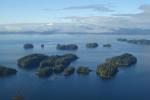
(06/15/2010) A state biologist has labeled a logging proposal to hand over 80,000 acres of the Tongass temperate rainforest to Sealaska, a company with a poor environmental record, ‘fatally flawed’. In a letter obtained by mongabay.com, Jack Gustafson, who worked for over 17 years as a biologist with the Alaska Department of Fish and Game, argues that the bill will be destructive both to the environment and local economy.
Locals plead for Tongass rainforest to be spared from Native-owned logging corporation

(04/29/2010) The Tongass temperate rainforest in Alaska is a record-holder: while the oldest and largest National Forest in the United States (spanning nearly 17 million acres), it is even more notably the world’s largest temperate rainforest. Yet since the 1960s this unique ecosystem has suffered large-scale clearcutting through US government grants to logging corporations. While the clearcutting has slowed to a trickle since its heyday, a new bill put forward by Senator Lisa Murkowski (Rep.) gives 85,000 acres to Native-owned corporation Sealaska, raising hackles among environmentalists and locals who are dependent on the forests for resources and tourism.













